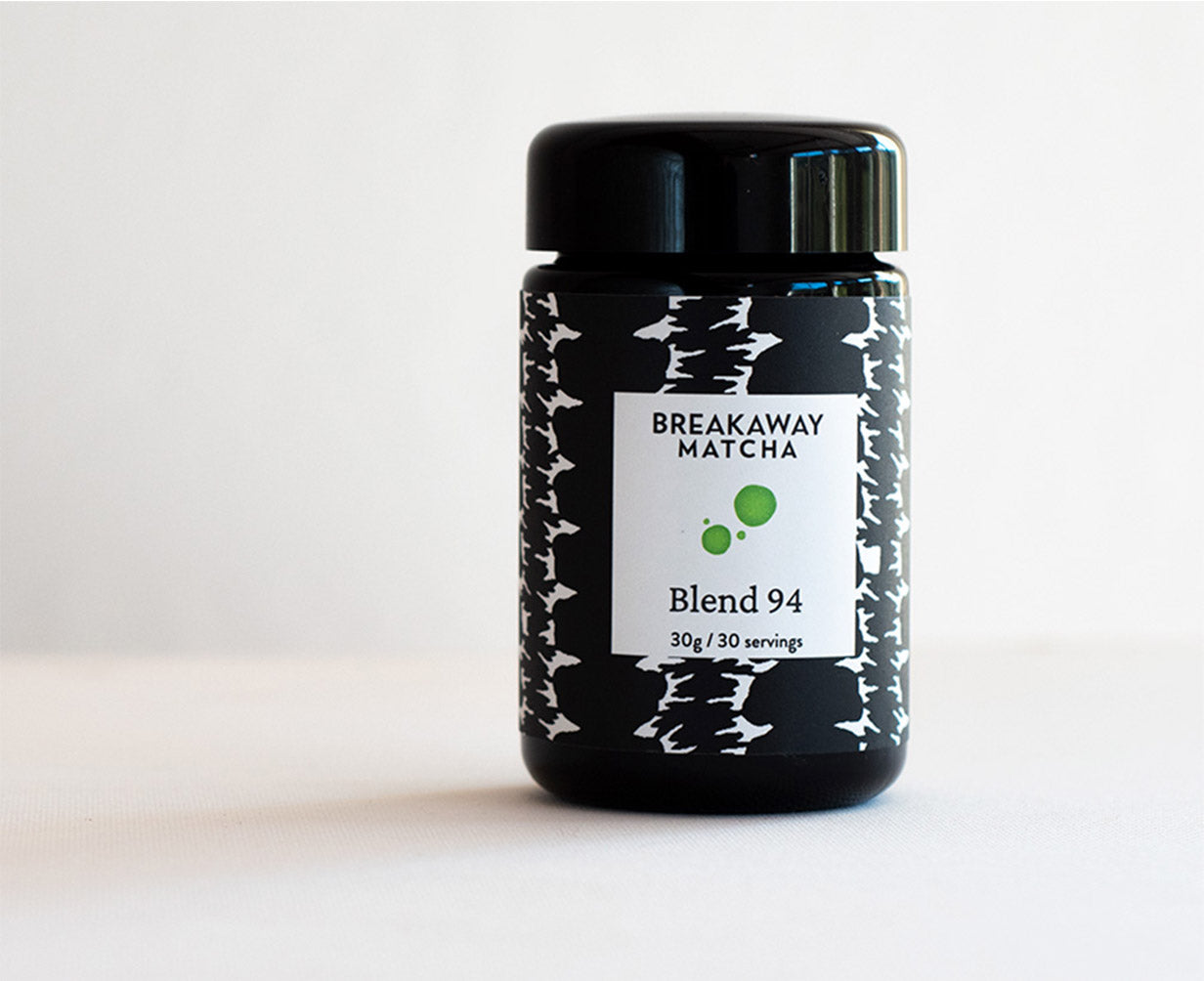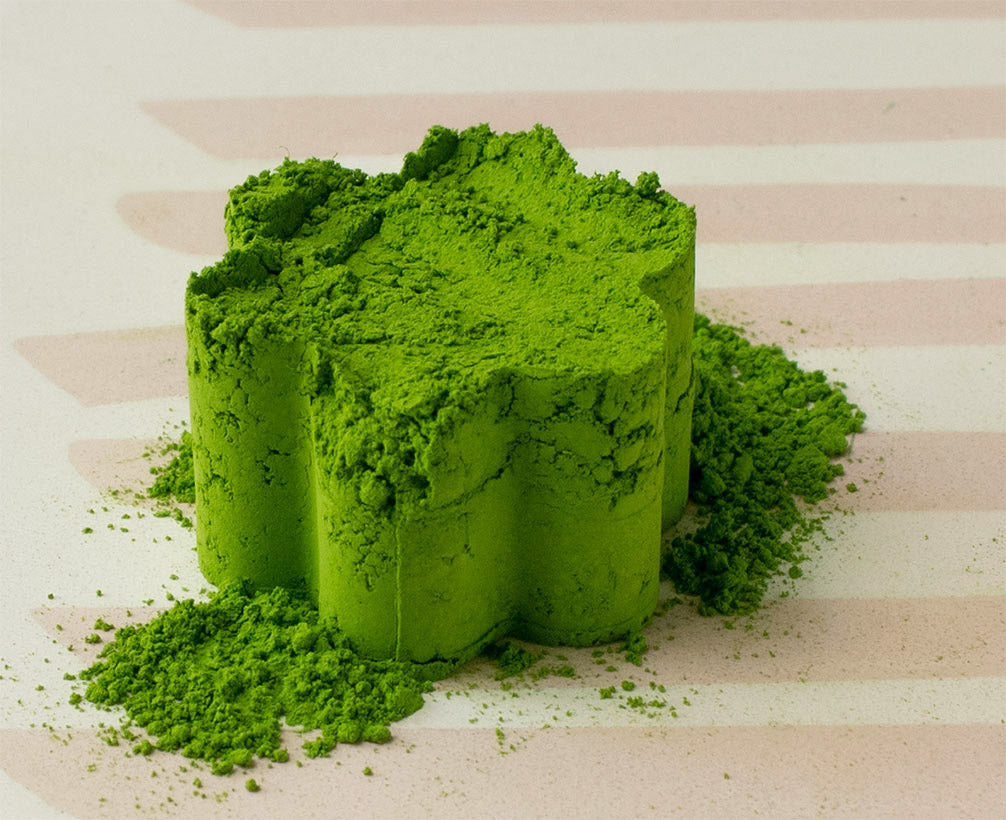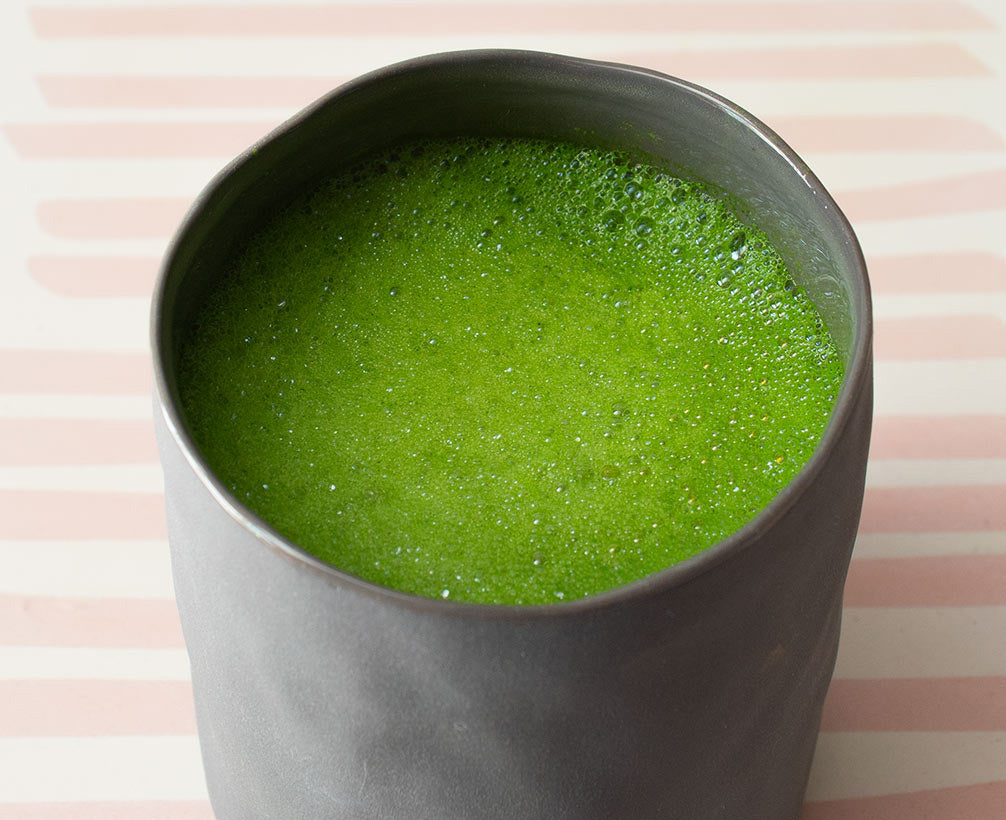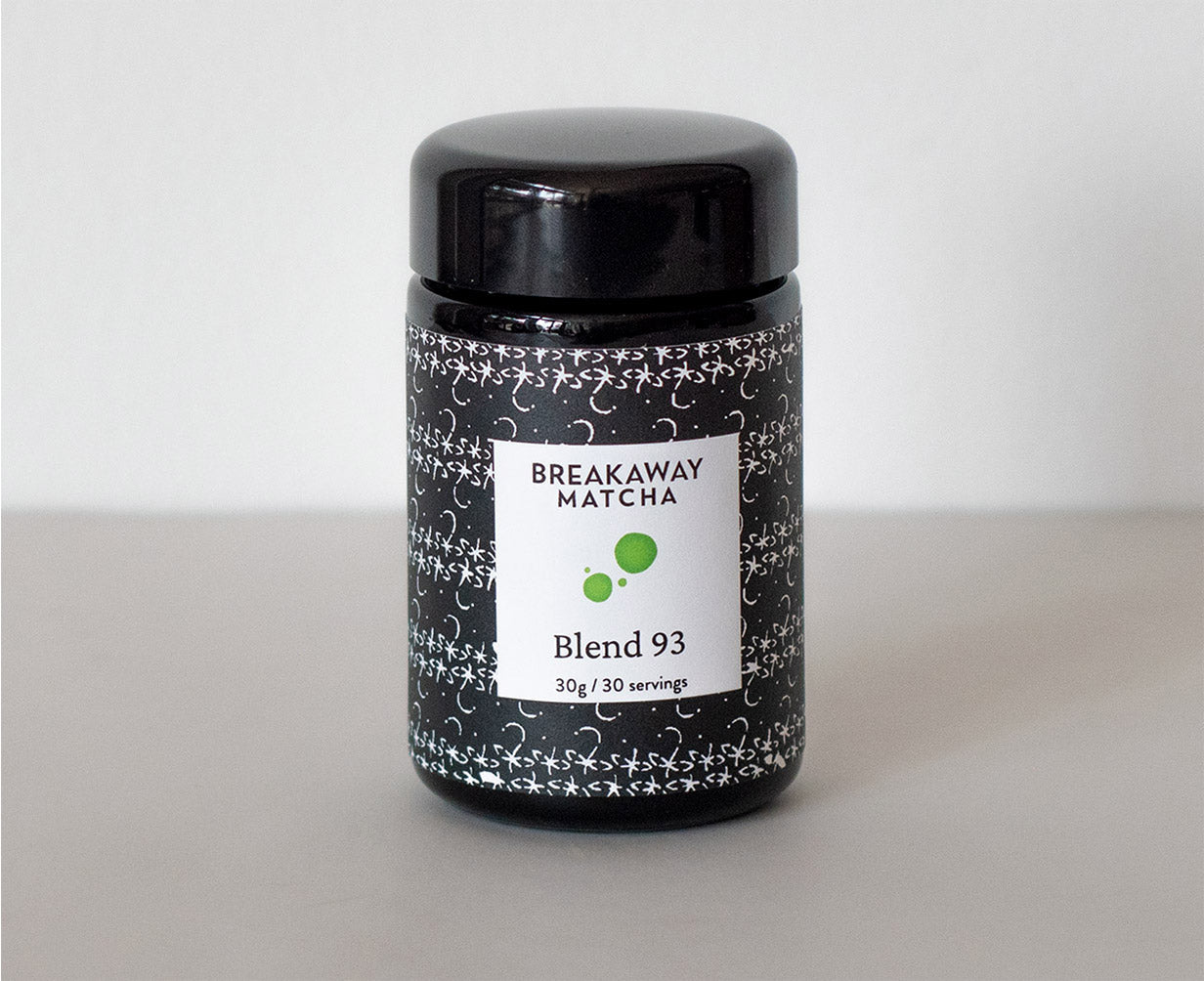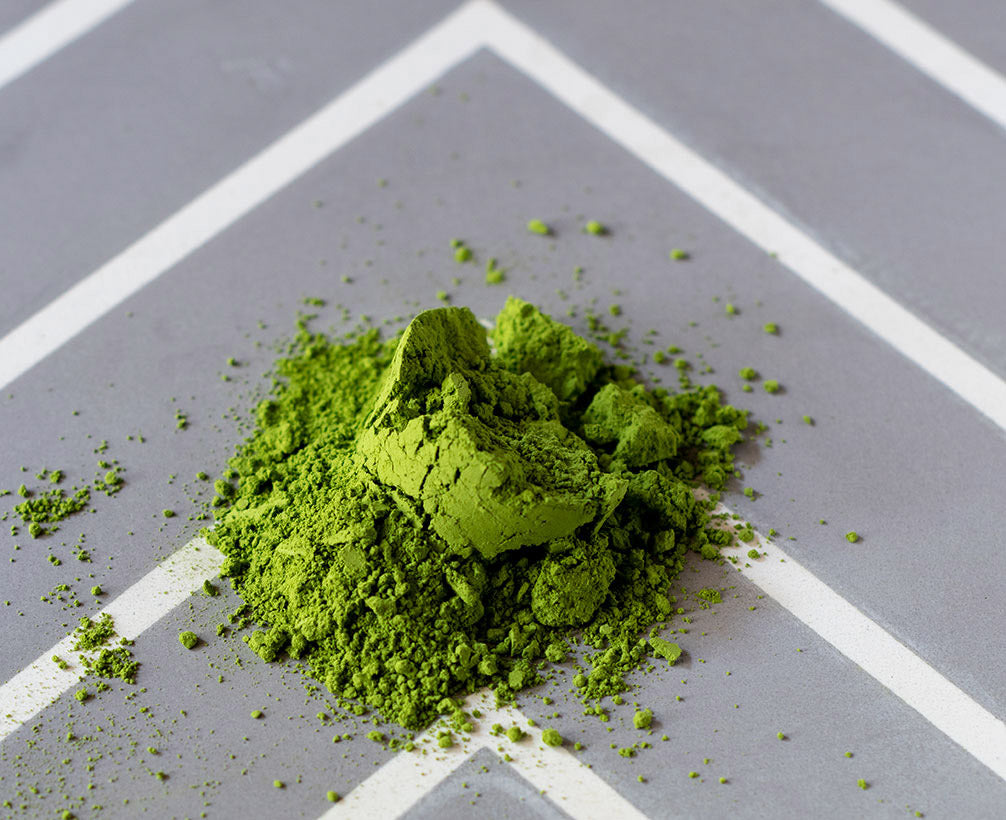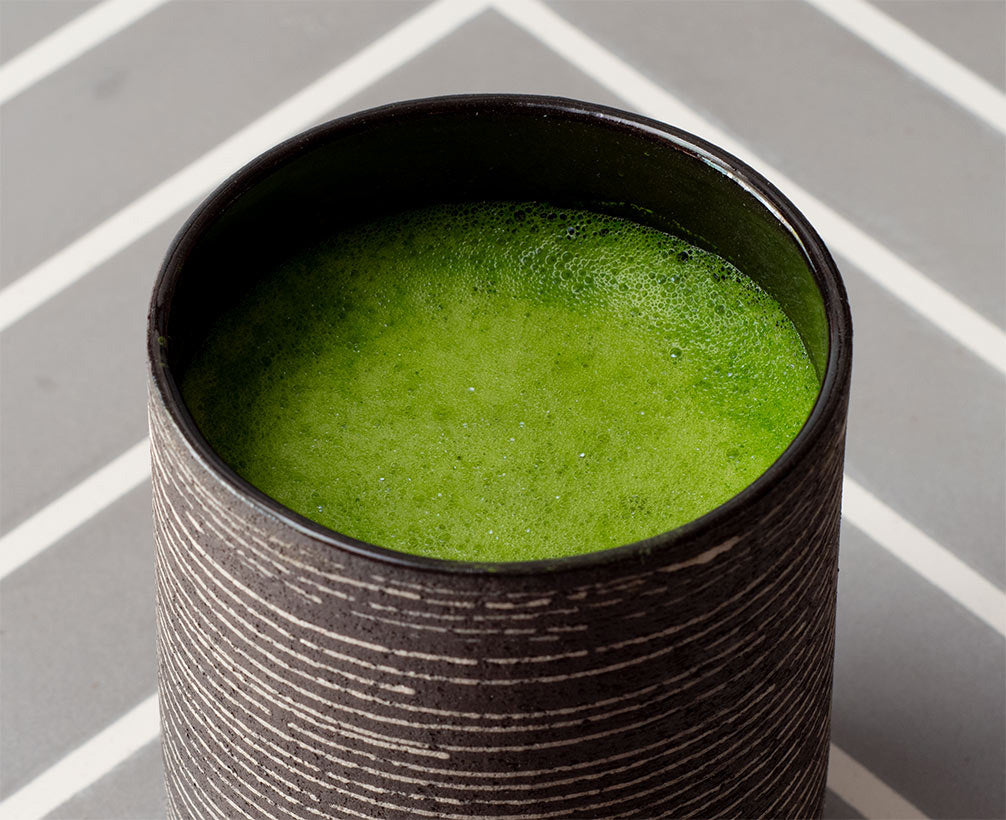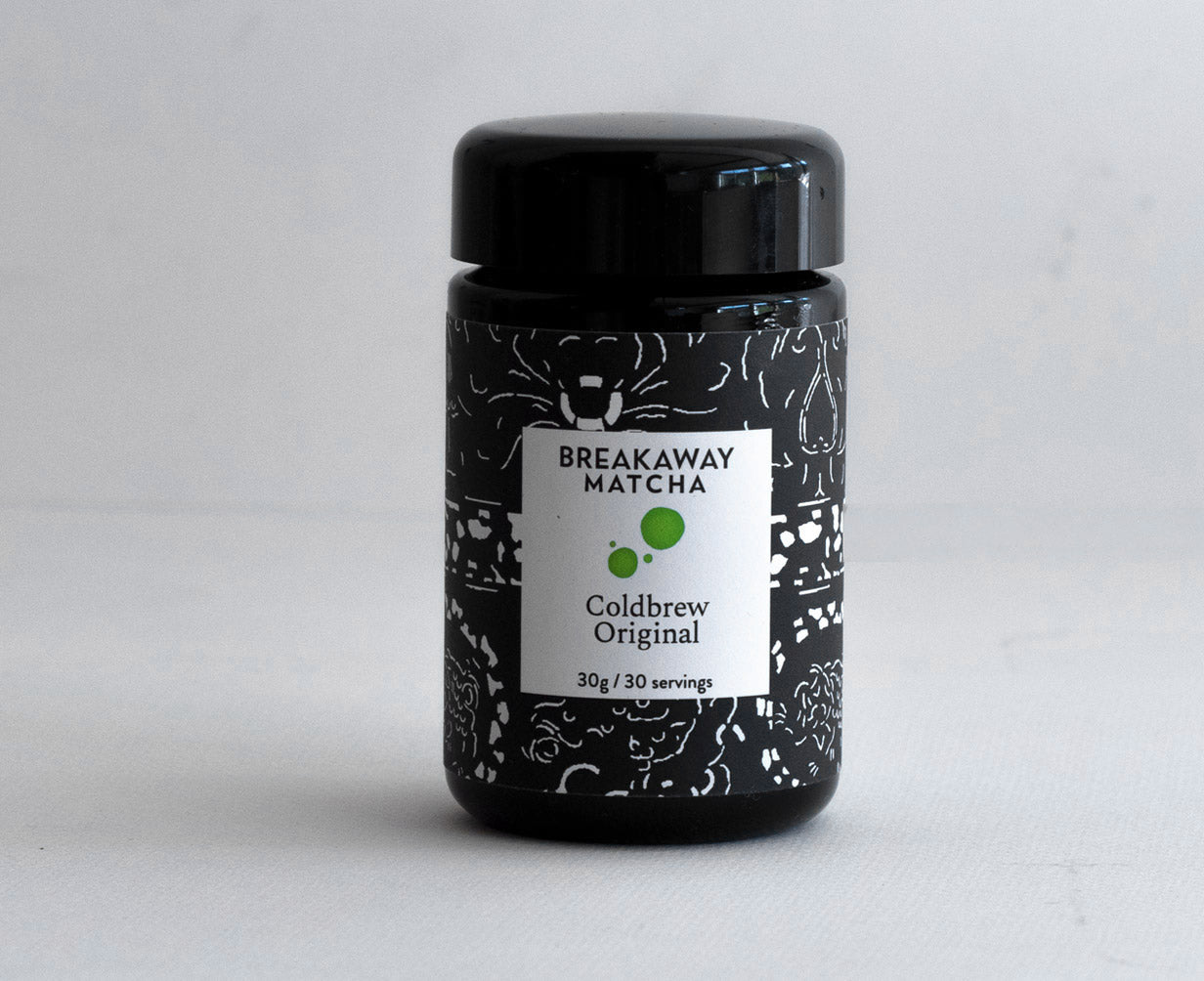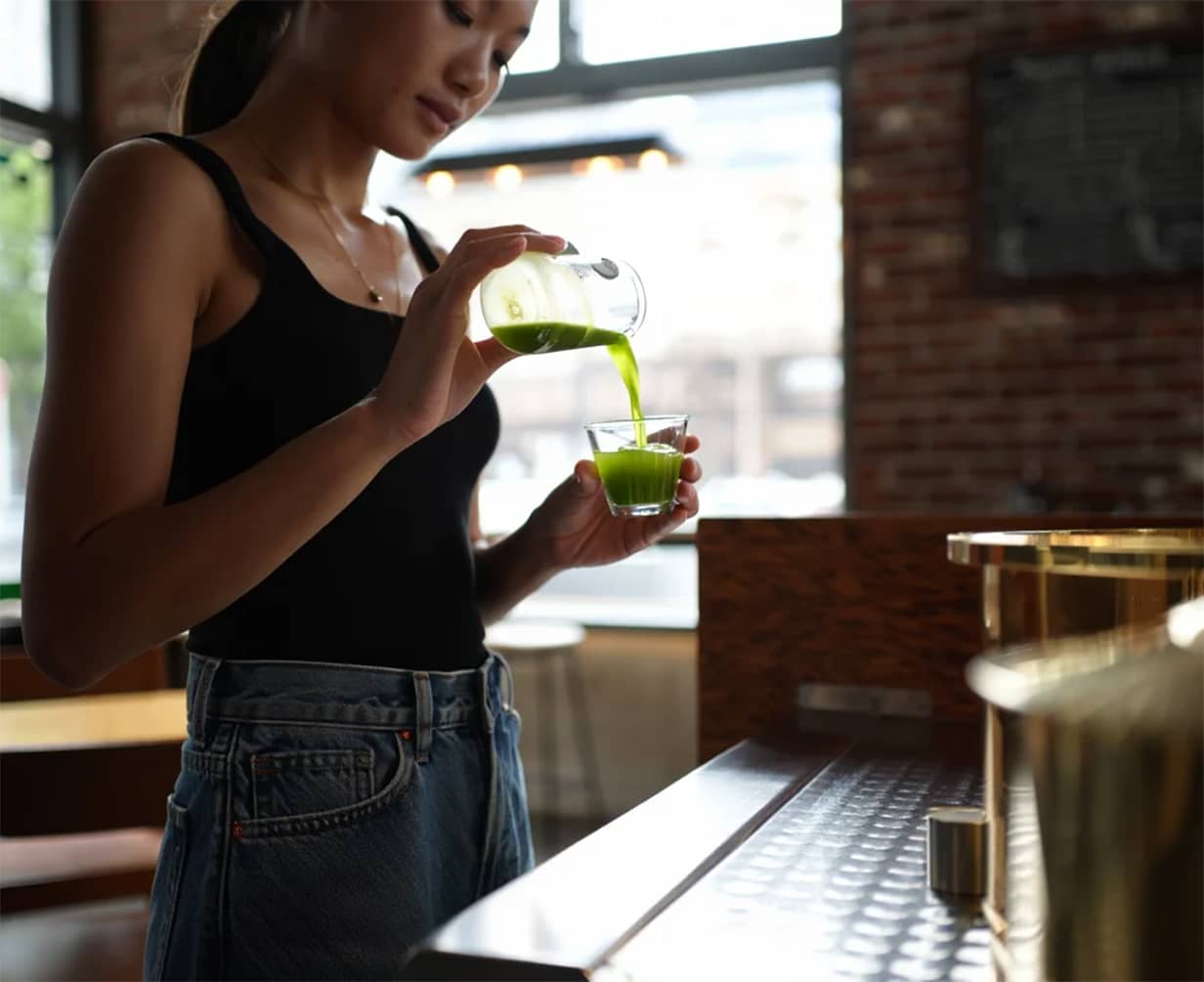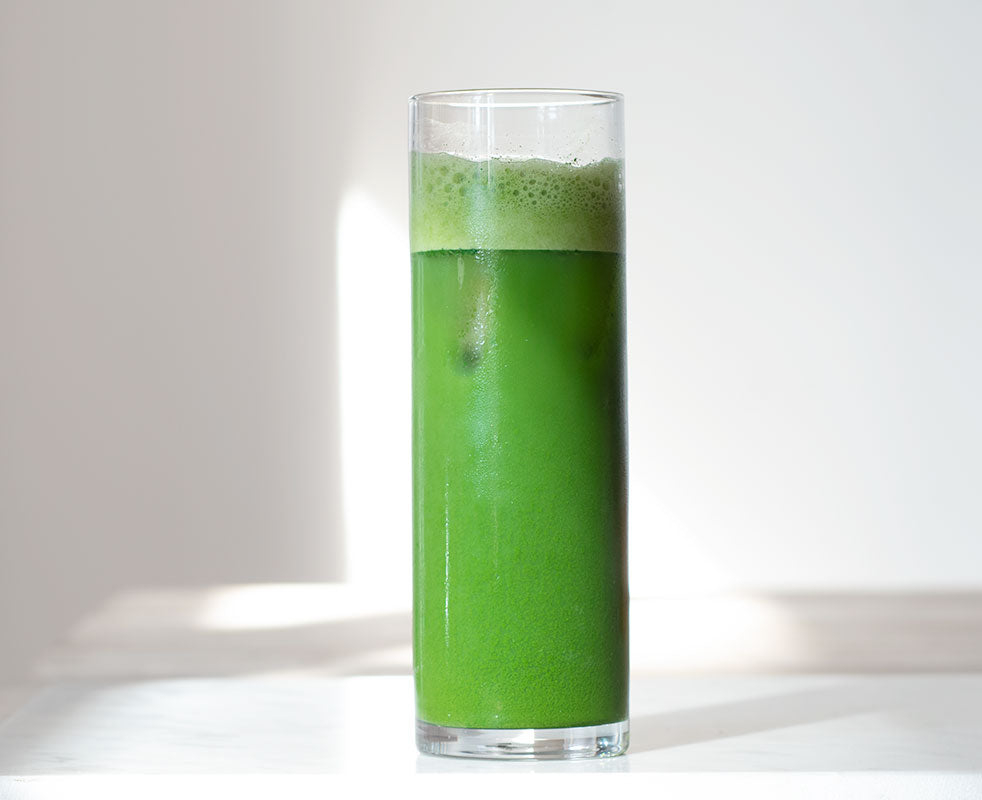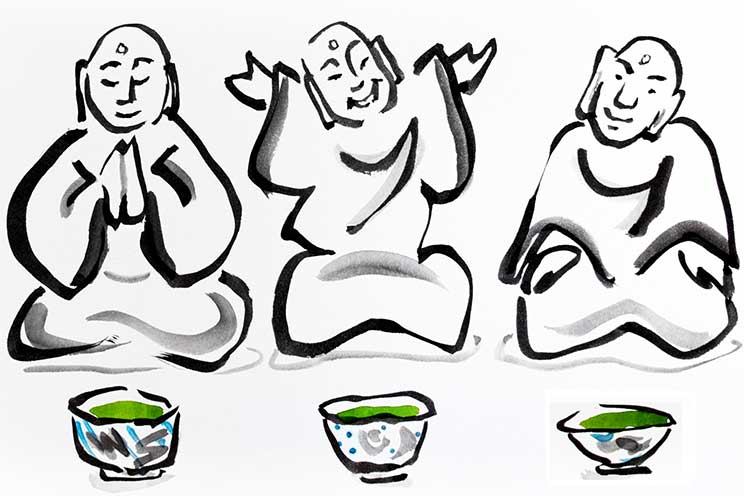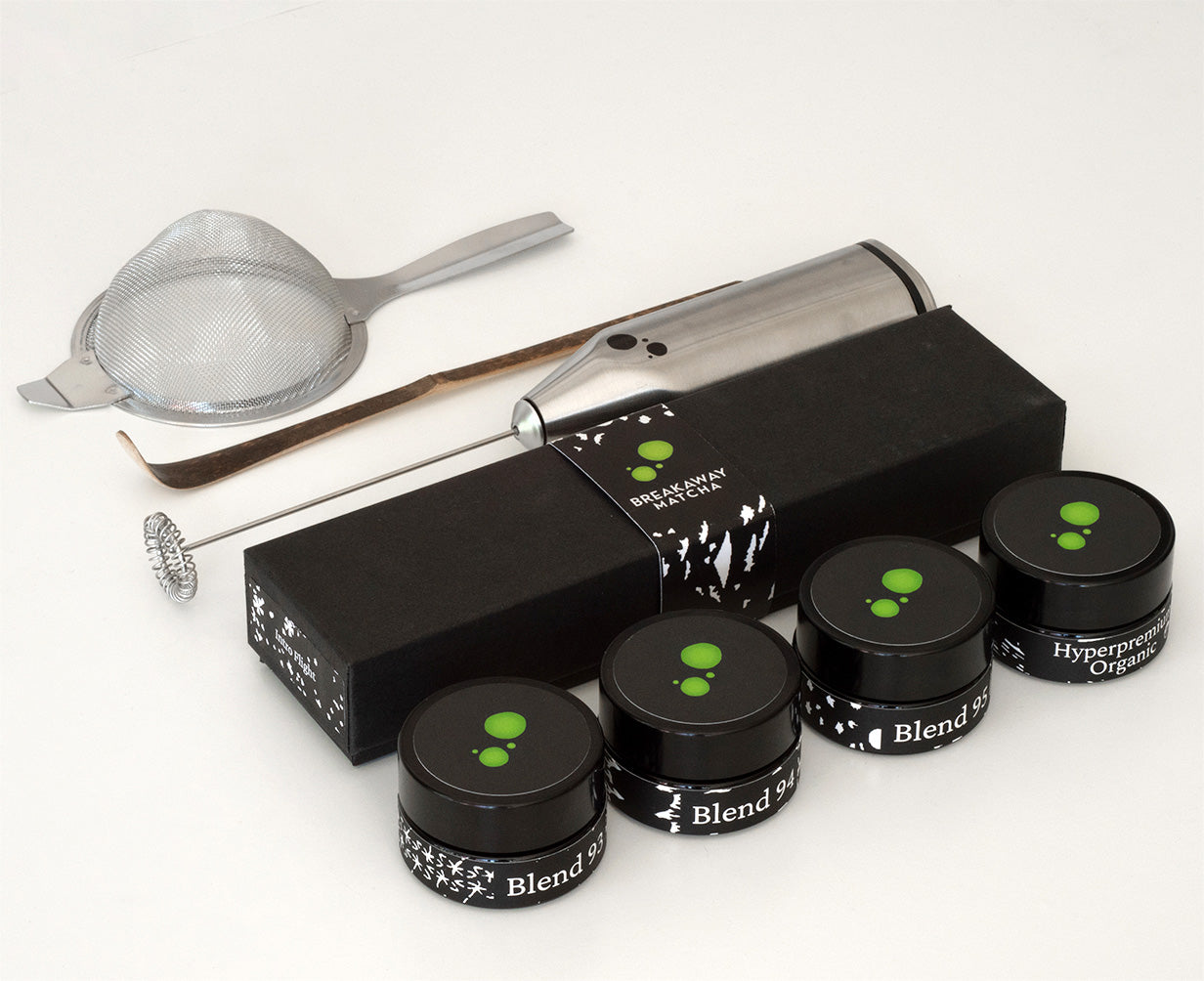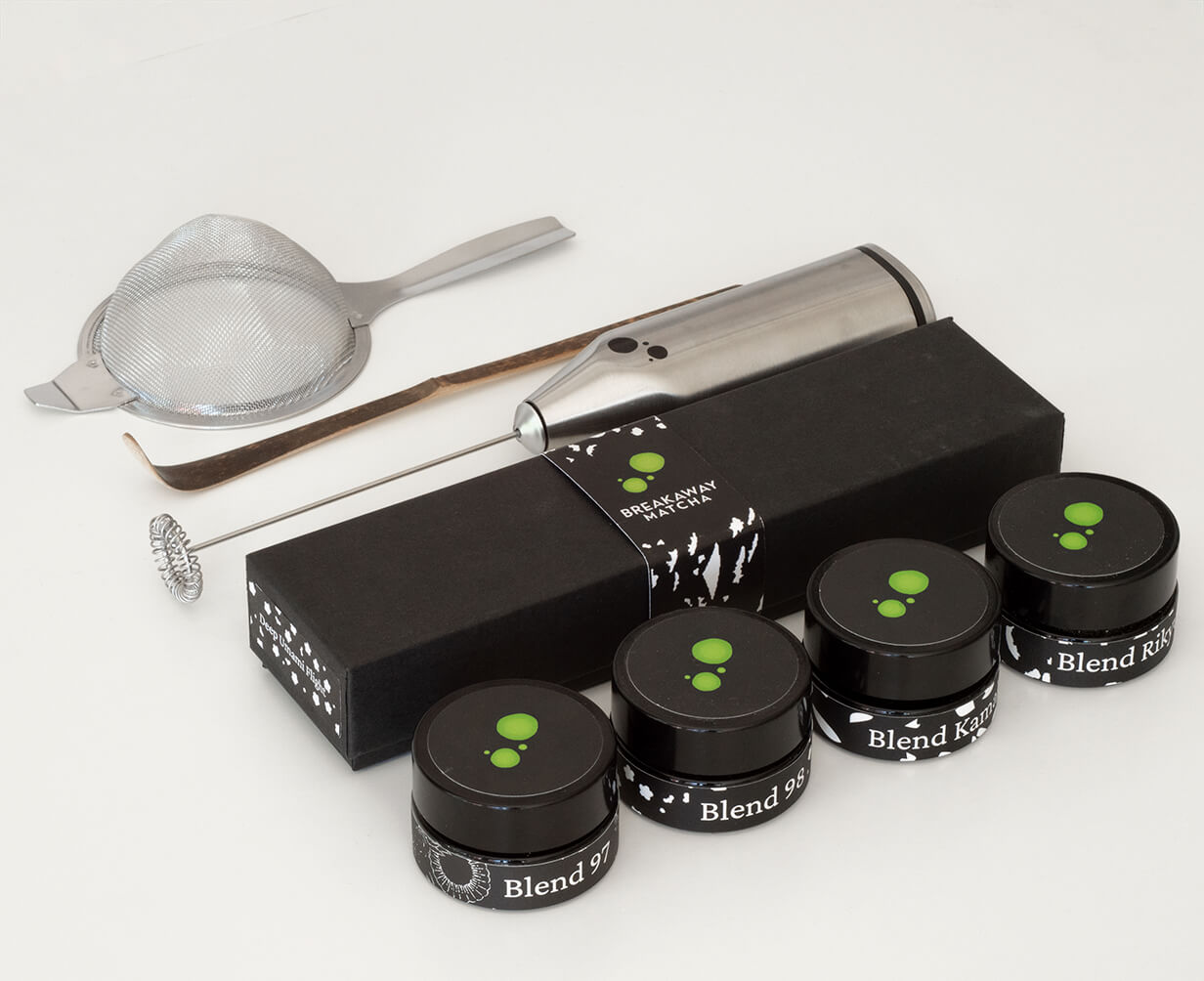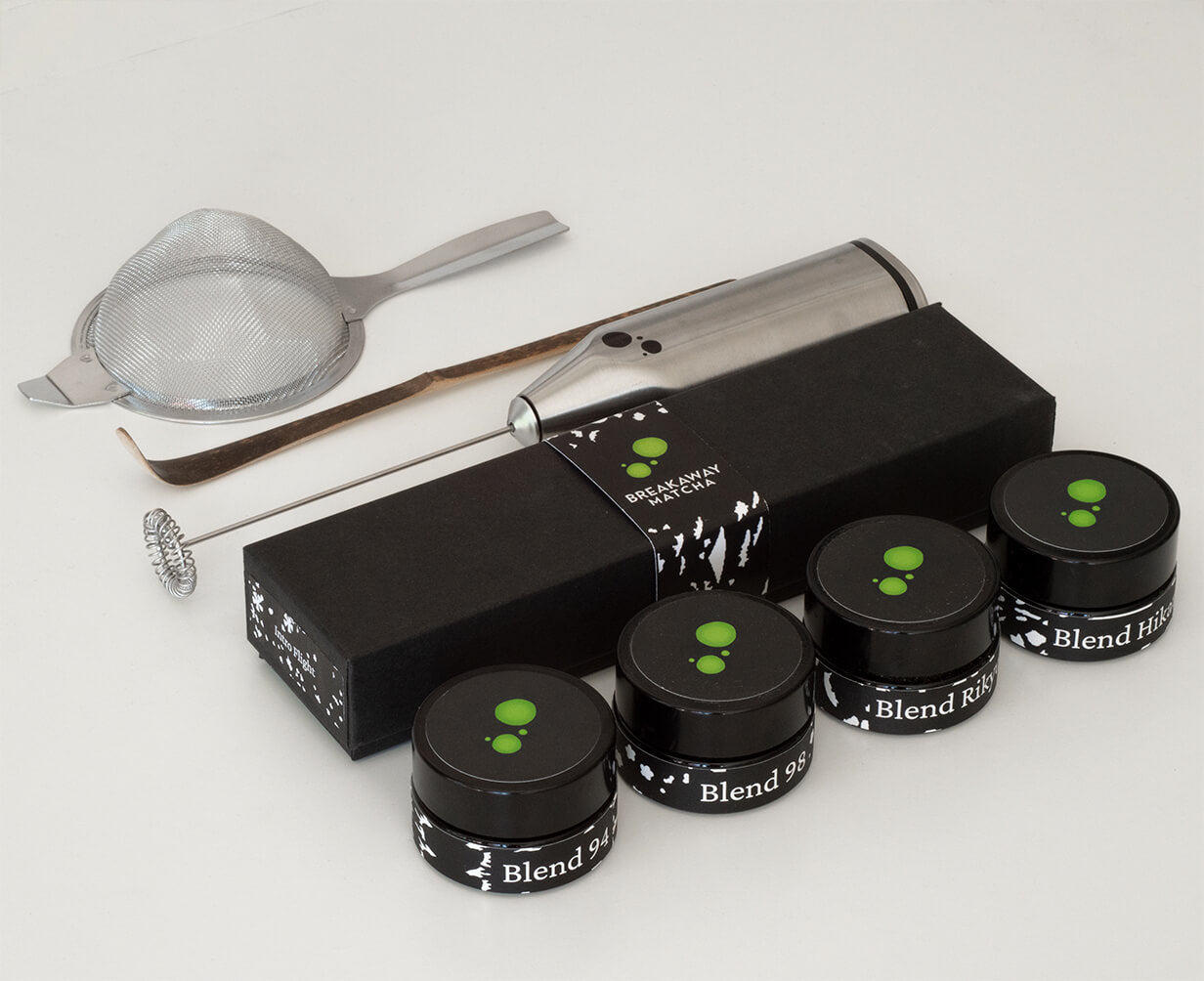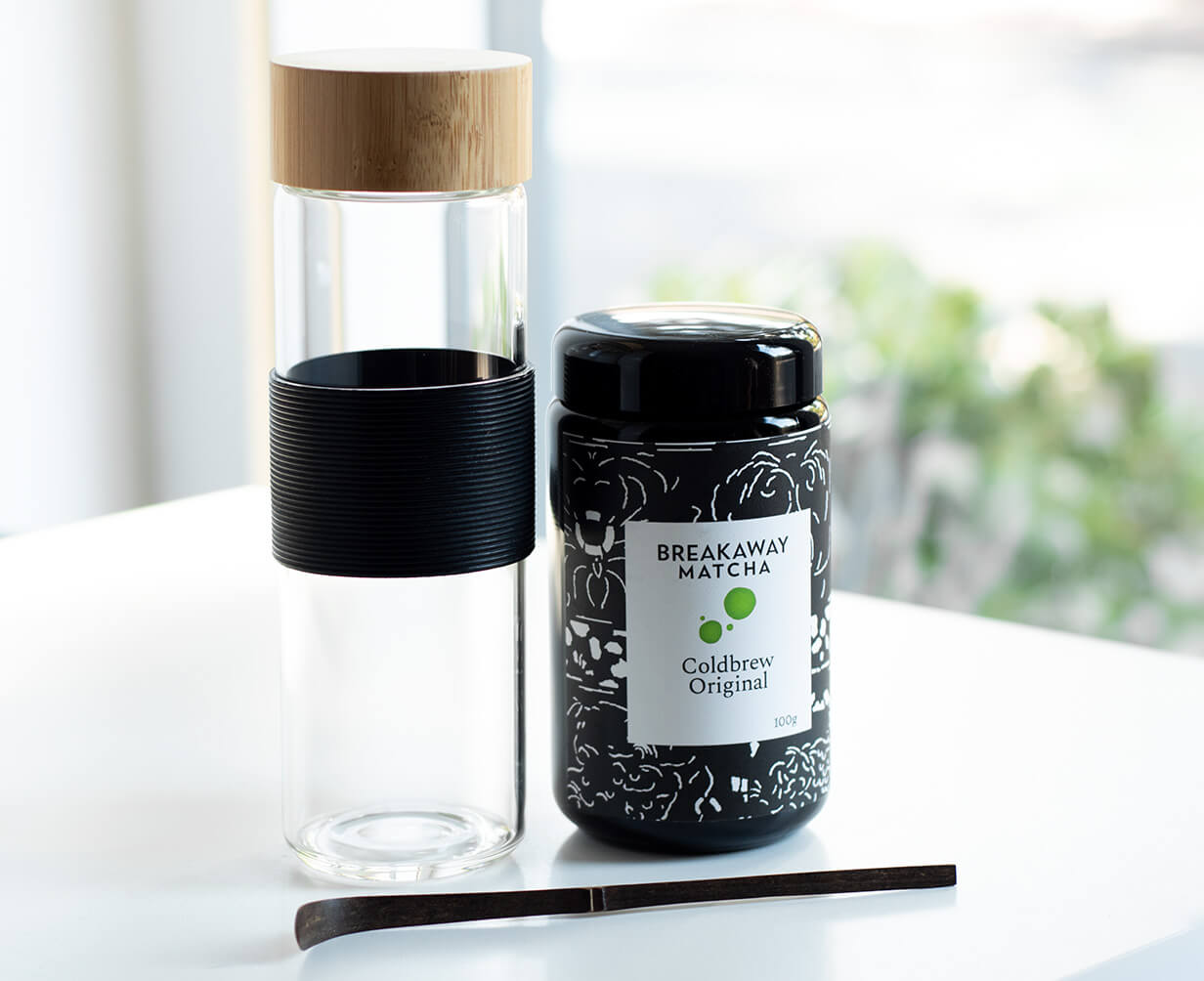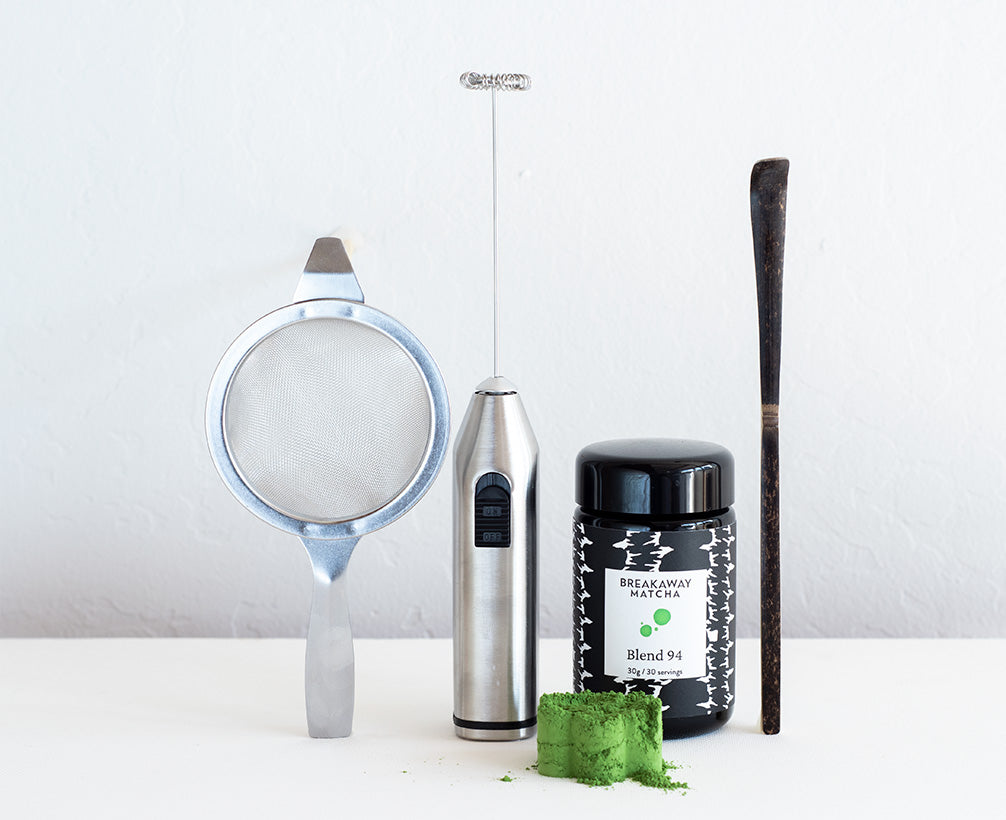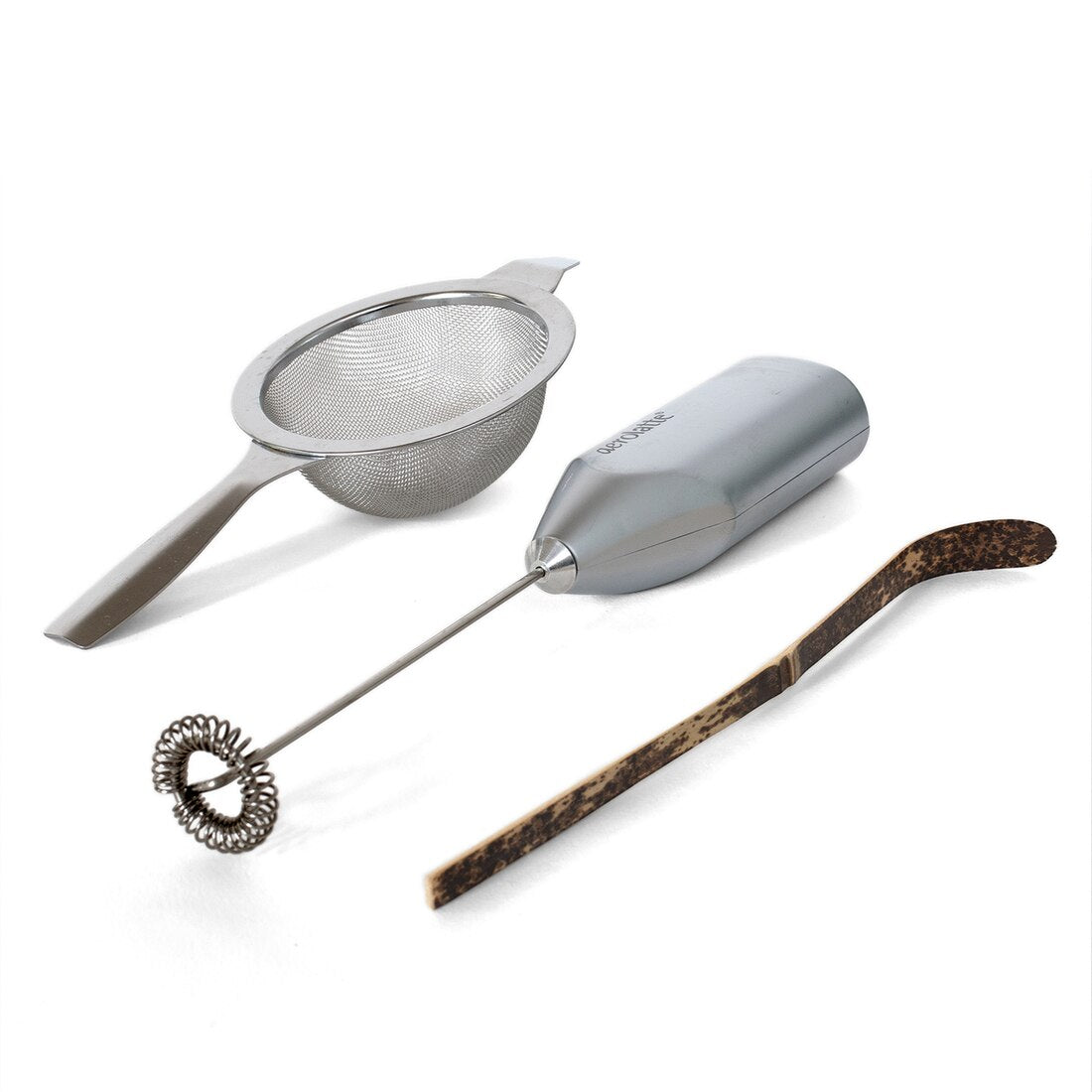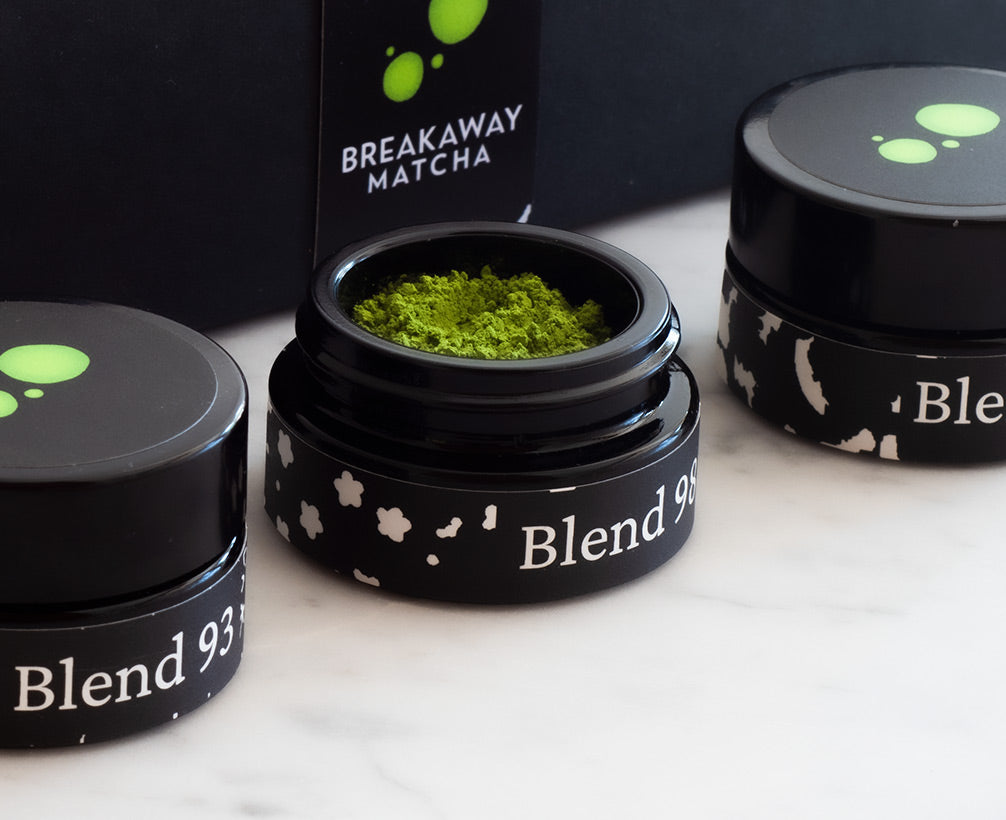Premium Matcha + Water = Vibrant You

Our Best Sellers
They're popular for a reason! Clean, vibrant, and so tasty
Best for Beginners
An easy way to get everything you need to get started with Breakaway
Your Questions Answered
We find and develop relationships with obsessive matcha farmers. Like many farmers in Japan, these farmers typically operate as part of agricultural cooperatives that “bundle” their matcha harvests with other coop members, most of whom are very nearby. But it’s remarkable how different the “terroir” of matcha fields, even just hundreds of meters from one another, can be. We thus will blend tencha (leaves that are destined to become ground and turn into matcha) from different terroir into our signature blends.
No. No sugar, additives, or any other nonsense. It’s 100% extraordinary green tea leaves, ground up into a fine powder.
Yes, water temperature is utterly critical to making great matcha, for both coldbrew and warm drinks. Get the basics of water temp and matcha here.
Mainly because the farmers and processors care so much; their processes take longer, require more steps, and are just harder. They’re pretty obsessed with producing Japan’s tastiest and healthiest matcha, and we don’t mind paying them well for the extraordinary product they produce. Rarity comes into it as well -- some blends, especially the named blends (Rikyu, SE, Hikari, and Daphne) have extremely limited production. These teas are hard to produce.
Some people insist on organic (generally for good reasons), so we searched hard for years and finally found what we feel is the tastiest and best organic matcha in the domestic Japanese market. However, our conventionally grown matcha is utterly safe, and it tends to taste better because its umami/amino acid structure is more pronounced.
Enchanting Matcha
Must trys for anyone looking for elegance and refinement in a matcha
